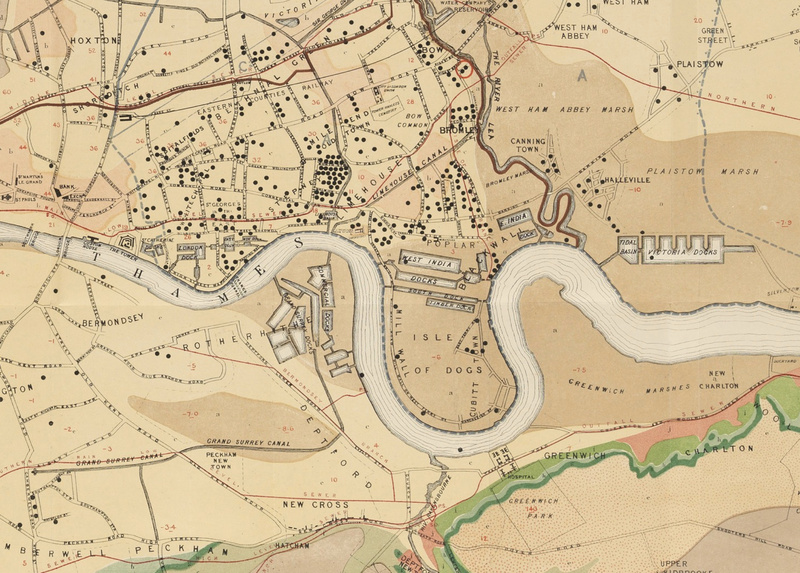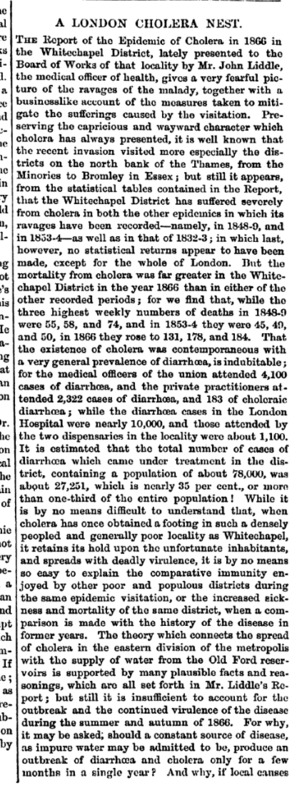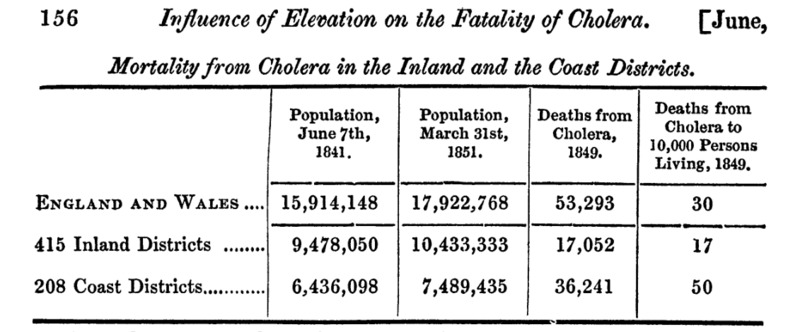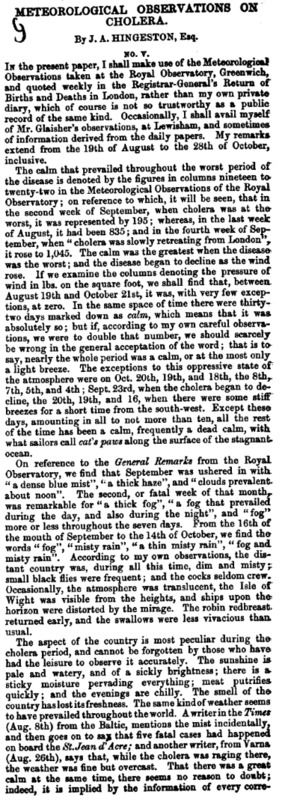Mapping Cholera & its Impact on Society
This combination of sources documents how Cholera’s reach forced societies throughout London to turn to alternative informants of medical knowledge in order to explain this disease’s emergence, along with how it impacted people’s perceptions of gender and community. Repeated outbreaks and high death tolls catalyzed profound social, infrastructural, and scientific transformations, yet the stimulation of broader quests for medical knowledge was also met with widespread fear and confusion. For this reason, sources such as Meteorological Observations on Cholera explore alternative reasons for which the “bad air” theory was no longer leading London down the right path of medical discovery. Similarly, the inadequate and unsanitary living conditions of London urban planning also impacted masculinity as the complex and multifaceted topic reflected broader societal norms based on emerging ideas of cleanliness. Moreover, Cholera reflected vulnerability in health for men which was often the complete opposite of their desired strength and resilience facade throughout the 19th century; for this reason, the disease’s severe physical debilitation and often rapid death undermined traditional notions of male strength and invulnerability. Women and children were also thought to have contracted this disease much easier, which is why male death tolls from Cholera were particularly dawning during this era. This combined array of sources exploring maps, astrological reports, and social inequities aims to highlight the vulnerability that disease causes in more ways than one while reflecting goals that shifted ideologies in order to save preconceived medical notions.




